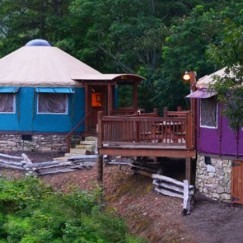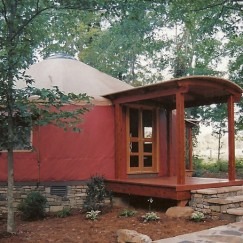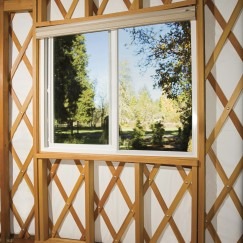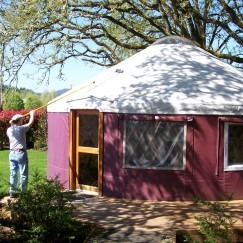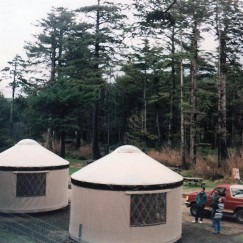4 Benefits of Downsizing Your Living Space
 What do Jimmy Hendrix and Henry Thoreau have in common? They were both fans of tiny homes. Hendrix opted to stay in a cottage rather than a luxury hotel in Maui in the 1970s. A century and a half prior, Thoreau moved into a 10’ by 15’ cottage in Walden Woods. Today, many Americans are catching onto the magic of living in small spaces. Tiny home vacation rentals are gaining popularity. Some people are opting to live in smaller spaces—often under 500 square feet in size—permanently. Overall, the tiny house movement is gaining steam and is expected to enjoy healthy growth in the oncoming decades. Let’s take a look at some of the advantages of small space living.
What do Jimmy Hendrix and Henry Thoreau have in common? They were both fans of tiny homes. Hendrix opted to stay in a cottage rather than a luxury hotel in Maui in the 1970s. A century and a half prior, Thoreau moved into a 10’ by 15’ cottage in Walden Woods. Today, many Americans are catching onto the magic of living in small spaces. Tiny home vacation rentals are gaining popularity. Some people are opting to live in smaller spaces—often under 500 square feet in size—permanently. Overall, the tiny house movement is gaining steam and is expected to enjoy healthy growth in the oncoming decades. Let’s take a look at some of the advantages of small space living.
Going Small: Benefits of Living in Yurts and Tiny Homes
- Economic Advantage
There’s no denying the cost savings of a yurt or tiny home. A yurt can be as little as $6,000 (not including site prep and platform), while a suburban home can easily price at $500,000. Small spaces are more affordable to acquire and maintain. As home size increases, so does maintenance, heating, and servicing costs. Moreover, living in a modestly sized home can allow for quick debt reduction—a high priority for many following the Recession. Yurt and tiny home fans have reset their priorities to focus more on enjoying life, rather than working to keep up with debts and mortgage payments. Instead of spending decades paying for a McMansion in the suburbs, yurt/tiny home owners can accomplish financial freedom early in life. Finally, a cozy little home looks “full” without gobs of stuff, while a larger home appears empty without excess possessions. All in all, a tiny home can allow people to escape the consumer culture. - Environmental Friendliness
Tiny homes are sustainable on multiple fronts. First, they require fewer building materials and create less construction waste than conventional homes. A tiny home or yurt can require up to ten times fewer building resources than a 2,200 square foot structure. As living space decreases, so do heating/cooling fuel needs—it is much easier to heat a small cottage than a standard suburban home. Indeed, many yurts and tiny houses utilize solar and/or wind energy for additional savings and fuel efficiency. Historically, yurts have scored high for energy efficiency; their round walls minimize surface areas where heat can escape. In addition to their smaller carbon and construction footprints, yurts are a better fit for a natural setting. They sit very lightly on the earth; their only construction requirement is an elevated platform, which has far less impact than a traditional home’s leveled site and concrete foundation. Yurts and tiny homes can allow residents to be close to nature without sacrificing comfort. - Simplicity and Happiness
Moving into a small structure forces one to de-clutter. Eliminating inessential items clears the mind and often brings happiness. Consider the amount of energy one must devote to things—shopping for things, purchasing things, and servicing things. A tiny home or yurt is complete with just a few treasured items, freeing your mind for more personal passions. Downsizing can create long-term happiness, as one is better situated to weather any storm with a smaller or non-existent mortgage payment. Finally, yurt and tiny home owners may well spend less time cleaning and maintaining their homes and more time on their personal pursuits. - Flexibility through Portability
Yurts are portable; their original designers were nomadic Mongolians who needed structures that could be quickly deconstructed, carried by pack animals, and erected in just a few hours. Depending on the size, a yurt may require as little as a couple hours to install, or up to a day or two once the platform is constructed. Smaller tiny homes can be constructed on trailers and hauled from location to location. Such flexibility in locale allows them to be used for multiple purposes, from main residence to guest home to artist’s retreat.
Thoreau wrote that he moved into his woodland cottage “to live deliberately…I wanted to live deep and suck all the marrow out of life, to live so sturdily and Spartan.” If you, too, are drawn to a simpler, more affordable, more eco-conscious way of living, a yurt or tiny home may be the perfect dwelling for you.
Download the checklist, “4 Benefits of Yurt Living“

